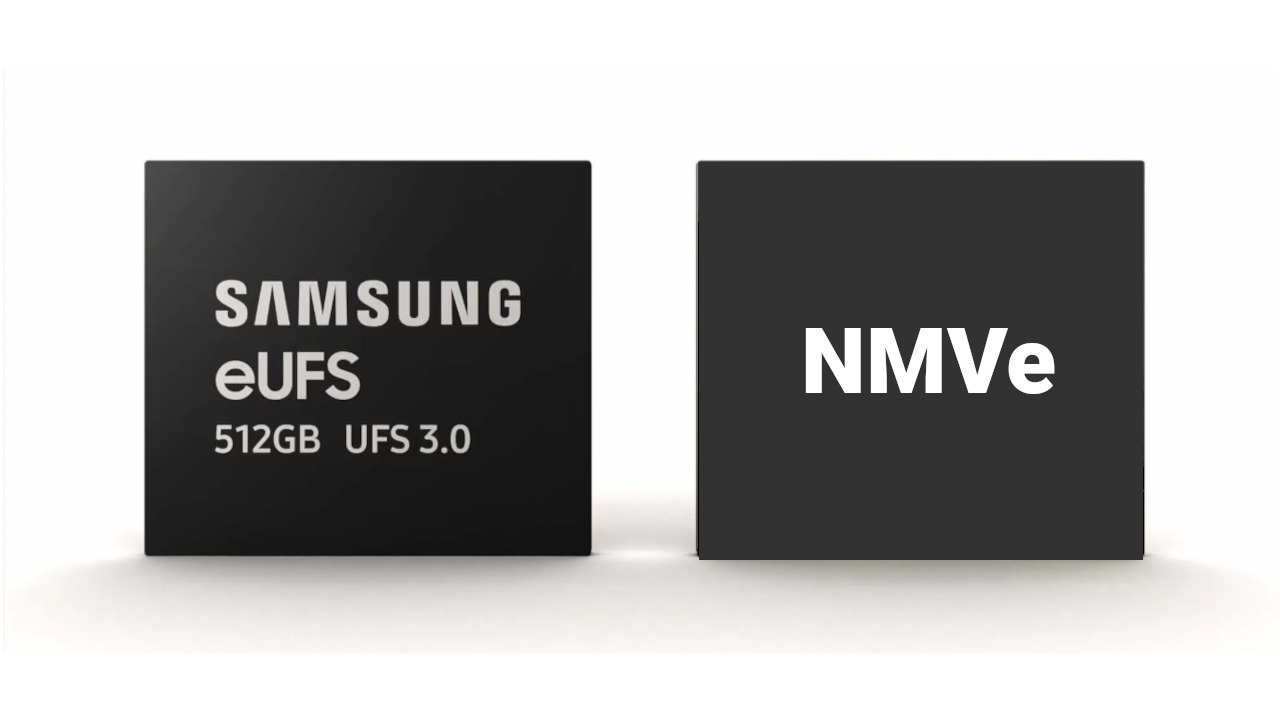NVMe vs UFS 3.1 Storage comparison
Guess this is why iPhones are faster than android
Like it or not, knowing your smartphone specs and hardware configuration is as important as taking the correct medication for your health — This may sound abstract, but it is true. On this grounds, we at Allroundreview are keen on ensuring you have proper knowledge of your smartphone and its hardware.
Welcome to another day at the comparison chamber:
In the course of the comparison, we will be making this as easy to understand as possible, while also noting every detail down if possible. We will be taking a close look at the UFS 3.1 vs NVME is there any real difference between these two? I mean, significant difference, or is it just another case of egg and hen?
First, the basics. UFS is the short form for Universal Flash Storage. No complexity here, UFS is what takes care of your offline data storage needs. In major flagship devices like the Redmi K30 pro, UFS 3.1 keeps the ROM activity going. Basically, UFS 3.1 is like your sd card but unlike your sd card, it’s not removable and has a better read/write speed; hence, helping the device to run at a better speed; every task that needs to access data is stored on the ROM.
Related: UFS 4.0 vs UFS 3.1: Specs comparison
UFS 3.1
UFS 3.1 was launched in 2020, January. The first UFS storage to roam the system of smartphones was the UFS 2.0. The need for a faster storage device became a priority as the eMMC 5.1 was caught slow and in most cases, not living up to expectations when demanding tasks are being done. That is as far as the History lesson goes on UFS.
NVMe
NVMe Is to iPhone devices what UFS is to android. But unlike android UFS, the NVME in iPhone devices were tailored from SSD which is an offline storage device in computers. And not so few cases, often gave a better response read/write time compared to UFS in android devices.
In an attempt to draw a more balanced dynamics of these two competitors we will be concentrating on these areas.
For the sake of clarity, these tests were carried out by developers and researchers — For the purpose of specifics, these are the areas we will be concentrating on.
- Build Architecture
- Manufacturing process.
- Power efficiency
- Read/Write speed and
- Price factor.
BUILD ARCHITECTURE
Unlike UFS 3.1, NVMe is Apple’s own way of privatizing its hardware instead of making it a fair fight for android vs iOS. Apple is fully responsible for the optimization of this storage choice and as such, Apple has the ability to build the unit to their desirable compatibility, resulting in a much faster response time for their devices. Unlike android where manufacturers' position on the UFS is pretty stagnant where the choice of UFS is concerned. It’s a case of ‘use am as you see am’
Manufacturing process.
Both UFS and NVMe are storage devices; hence, have close dynamics when it comes to manufacturing. The NVMe is more advanced as it’s a somewhat scaled-down computer storage unit, unlike UFS which is mobile-based.
Power efficiency.
One of the advantages of being in charge of your modifications is, you can actually control what to increase or reduce. In this case, Apple chose to trim down anything that wasn’t read/write speed-related in the build of NVMe devices making it more efficient in task and battery management. Let’s face it, the quicker you get a task done, the earlier you can relax. The same goes for the NVMe in iPhones [dating back to the iPhone 6series]
That is not to say the UFS 3.1 is a failure but in this department. The NVMe is a better performer.
Read/Write Speed.
This is where the UFS 3.1 shrugged it out with NVMe on iPhone devices. Though there is no benchmark on this remark, with a previously obtained result from the 8 times slower UFS 2.1 doing fairly well against the NVMe, it's only expected that the UFS 3.1 is on par with the NVMe in terms of speed.
Pricing
Obviously, the NVMe in iPhone devices are much more expensive to make and build to smartphone compatibility, which almost rules out android smartphone makers ever going to the NVMe route. Instead, we have seen improvement in processor and other aspects of the android smartphone in an attempt to increase the response and productivity in android devices.
On this note, we conclude a not-so-technical aspect of the comparison between the UFS 3.1 vs NVMe. Be rest assured we will be revisiting this topic sometime soon with a more practical approach. So enjoy this plain discussion while you can and be ready to dig deep when the time comes.
Until the next, Zesushv signing you on to a wonderful day ahead.
